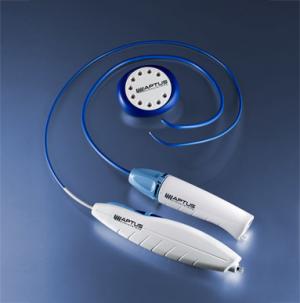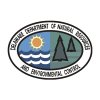Lewes doctor uses Heli-FX for safer surgery
A new tool is allowing surgeons in the Cape Region to perform a less invasive surgery on aortic aneurysms.
Dr. Mayer Katz of Beebe Medical Center’s Delaware Bay Surgical Service has seen the progress of aortic aneurysm repair firsthand. He said the latest piece of technology is making the procedure safer and less invasive than ever.
An aortic aneurysm is like a balloon in the wall of the aorta, the main vessel that carries blood from the heart to the rest of the body. If the balloon bursts, or ruptures, it can be fatal.
Katz said the goal is to find the aneurysm before it ruptures. Seventy to 90 percent ruptured aneurysms are fatal, and only half of those who reach the hospital survive, he said. Albert Einstein died from a ruptured aneurysm, Katz said.
To keep the aneurysm from rupturing, surgeons insert a graft into the aorta. Aneurysms can occur a numerous points in the aorta, most of which can be treated using endovascular surgery, a procedure that does not require surgeons to cut open the patient’s abdomen.
Katz said he remembers when the endovascular procedure was first introduced in 1990. “I was there at the Society for Vascular Surgery meeting,” he said. “I remember thinking, ‘This is crazy.’”
“We did the first one here in 2000,” Katz said, after the Federal Food and Drug Administration approved a device to perform the surgery.
But some aneurysms that occurred higher on the aorta, between the kidneys, still required open surgery because it was more difficult to keep the graft in place.
Katz said that is no longer the case.
The Heli-FX is a new tool developed by Aptus Endosystems Inc. of Sunnyvale, Calif., that surgeons can use to secure the graft. It looks like a corkscrew that attaches the graft to the aorta, and it prevents the graft from sliding out of place or leaking.
“We can treat anatomy that we couldn’t treat otherwise,” Katz said. “We would have had to do an operation.”
Katz has performed three of the first four procedures in Delaware using the Heli-FX. Dr. Jon Kittredge, who also works in Katz’s Lewes office, performed the fourth one, and all have yielded good results, he said.
“I see it as just one more tool that we have to avoid an open operation,” Katz said. A less invasive operation means the procedure is safer for the patient, and recovery time is low, Katz said.
Men are more likely to suffer from aneurysms than women, and the risk of aneurysm is higher for anyone older than 65. In Sussex County, 40 percent of the population is older than 60, Katz said. He said he operates on up to 40 aneurysms a year.
A family history of aneurysms and a history of smoking increase the risk. Katz said while quitting smoking can correct a number of health risks, “it doesn’t really change your risk for aneurysm,” he said.
Katz said he recommends all men over 60, and men and women over 50 with a family history of aneurysm should undergo an ultrasound to screen for the condition.





















































